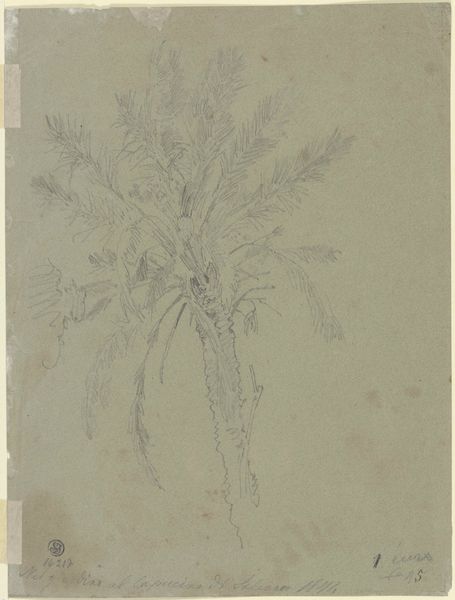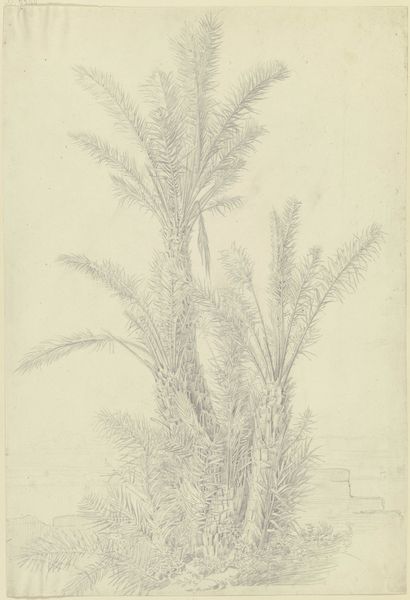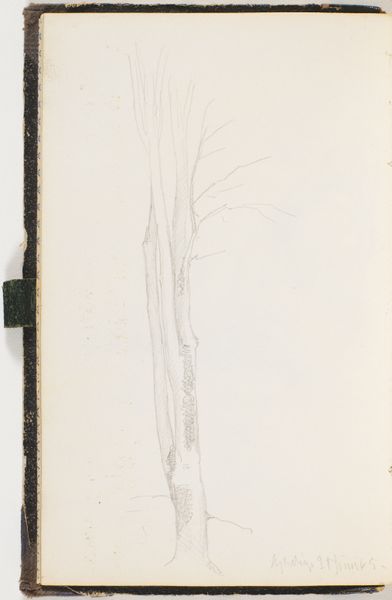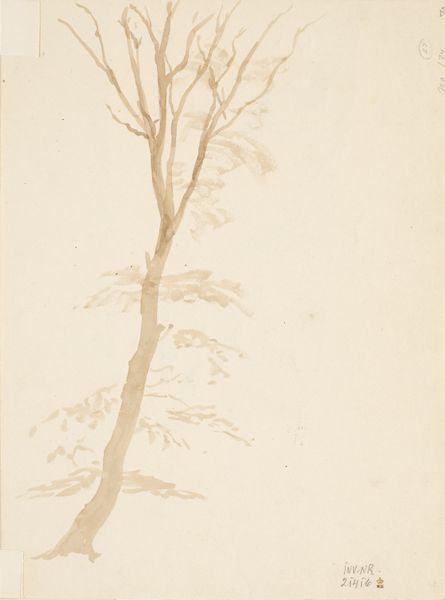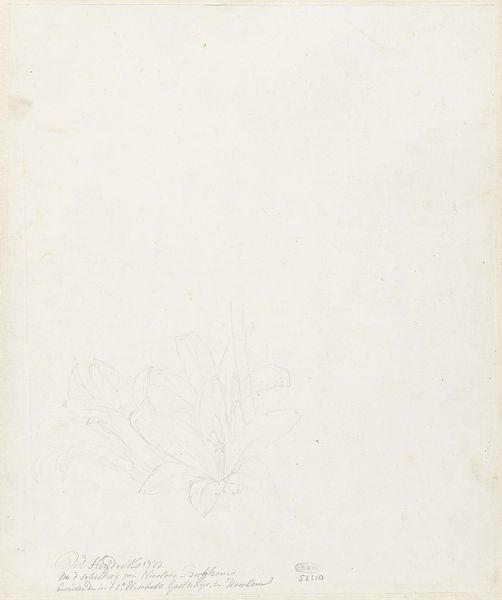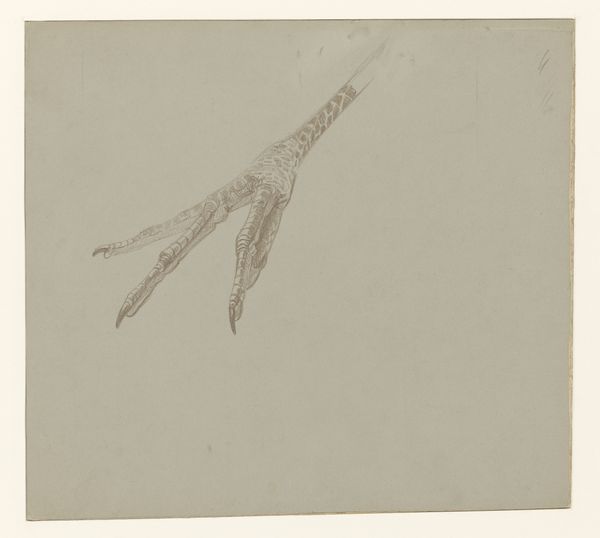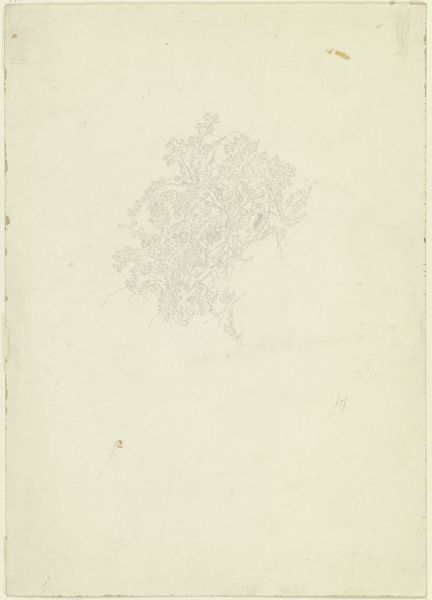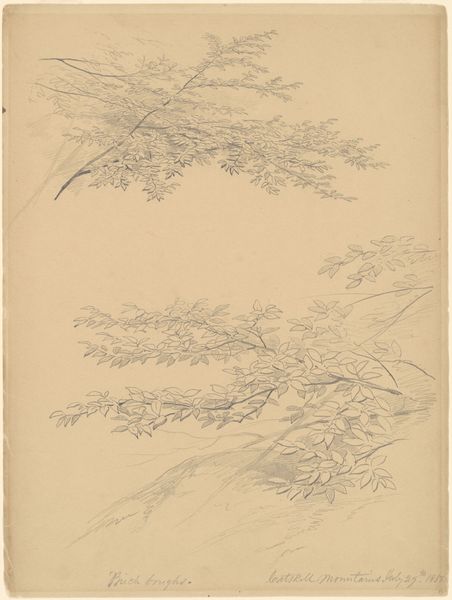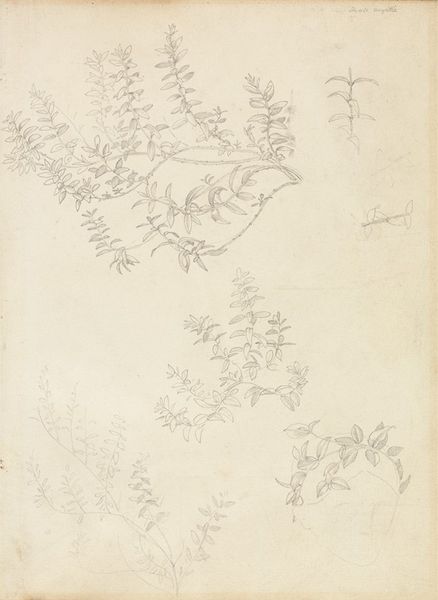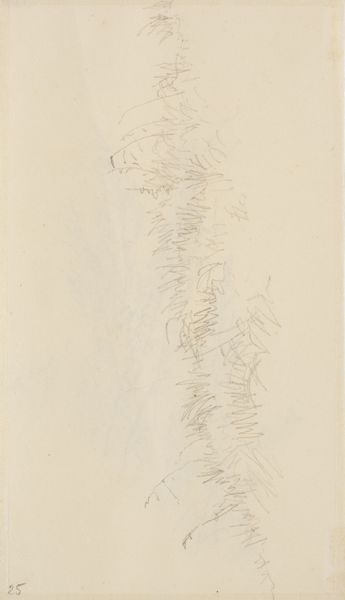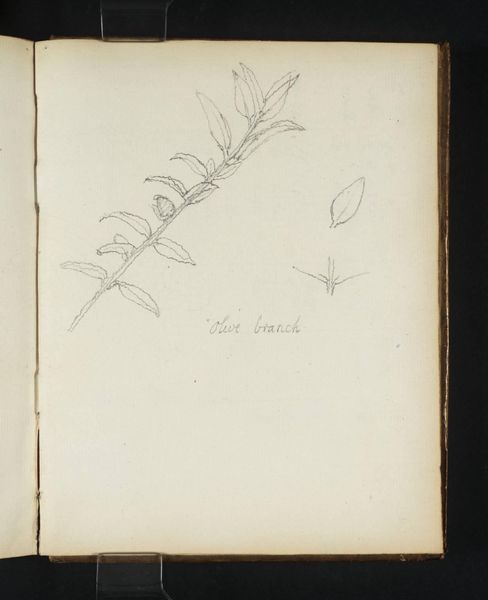
drawing, pencil
#
drawing
#
landscape
#
pencil
#
line
#
realism
Dimensions: 204 mm (height) x 115 mm (width) (bladmaal)
Curator: At first glance, this sketch by P.C. Skovgaard evokes a sense of delicate quietude. The bareness, the sheer simplicity...it whispers of nature observed with a respectful, almost reverent eye. Editor: Quietude indeed. The starkness of the lines against the untouched page makes me consider ideas of land usage during the mid-19th century and the relationship between Danish art and a rapidly modernizing landscape. This single bush becomes a synecdoche for larger debates on agriculture, nature, and identity. Curator: Well, the technique itself—rendered solely in pencil, and using such fine lines—demonstrates the artist's technical skill. He really captures the essence of this bush, without overwhelming the eye with unnecessary detail. Editor: It's precisely that sparseness that speaks volumes to me. Consider Skovgaard's context; this sketch isn't just a botanical study. Instead, it's a statement. As agrarian reforms shifted the socio-economic structure, Danish artists engaged in portraying what was lost or at risk in the transformation. This solitary bush encapsulates themes of scarcity, resilience, and adaptation. Curator: An interesting interpretation. For me, I feel it’s more about the beauty found in nature. It can be viewed just at face value and admired. Editor: But that is what I mean about its beauty! By emphasizing nature in times of urban growth and reform, artists implicitly question power and resource distribution in favor of some landowners or bourgeoisie. They subtly portray resilience within marginalized landscapes and rural cultures that stand in defiance to change. Skovgaard’s “En busk”, from 1869, embodies this. Curator: Well, seeing this work today makes me appreciate Skovgaard's precise linework. Editor: For me, reflecting on this landscape drawing is now less a journey of viewing the bush as it appears, and more so understanding its presence as commentary in social-political change.
Comments
No comments
Be the first to comment and join the conversation on the ultimate creative platform.
